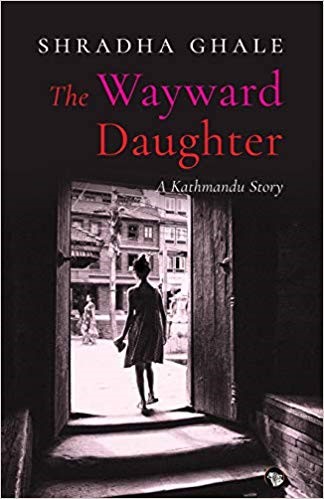The Wayward Daughter is a compelling read that portrays a Kathmandu girl seeking out love, finding herself and her own life in her family’s journey through many trials and triumphs.

Publisher: Speaking Tiger
Page: 280
Price: Rs 560
By Neha Rayamajhi 19 August 2019
Shradha Ghale’s debut novel is one among many works of literature that pay homage to Nepal’s capital, Kathmandu. Unlike others on this list, however, The Wayward Daughter is a brave and refreshing spin to this otherwise cliched genre written mostly by men and/or those who live in more privileged intersectionality of caste and class.
Ghale’s novel revolves around a teenager and her journey to adulthood. Sumnima, the protagonist is a first generation immigrant in Kathmandu, caught between identities she has inherited from her parents and those that belong to the more affluent occupants of this city. With caste as a recurrent theme, the book is a reminder of Nepal’s diverse strata systems that often gets excluded from the narratives of South Asian caste politics.
Sumnima’s parents are Kirati people, an ethnic group indigenous to the Himalayan region of the country. While her maternal family proudly continues Kirat traditions, her father is of a lineage that has assimilated to the Brahmin version of Hinduism. The constant conflict between these two families reflect the hierarchies of caste and the dynamics within them. Addition of characters from other castes and ethnic groups, give the readers access to conversations around Nepali social stratifications and how they affect people’s relationship to one another and ourselves.
For me, as a Chettri whose realities around caste is simpler than that of Sumnima, the author’s angle on this identity marker was illuminating, to say the least. On the other hand, the plots around gender read as if they were straight out of my teenage year journals. Dodging water balloons during Holi, preparing for the “Iron Gate” examination or swooning over the local radio jockey, Sumnima’s story perhaps belongs to a lot of us who were raised by Kathmandu. To me, reading these bits felt like a group hug of sisterhood I was sharing with girls from my generation that had no cell phones, rare access to the internet, and a very limited type of freedom that the younger Kathmandu now seem to enjoy.
Another reason why this book holds a special place in my heart, and not just my library, is the reference to “Rhododendron Girls High School.” As an alumni of the real “Rhododendron” school in Kathmandu, or a school that was distinctly similar to the one in this book, the descriptors of this institution are not just details that add layers to Sumnima’s story but also inside jokes and experiences lived by those who attended this school. Personally, I am grateful to Ghale for taking me on a trip to the “tall buildings freshly painted each year, spacious classrooms, a grand auditorium with life-size portraits of royal family members, and a sports field with a large grass pitch and an athletics track” inside the yellow walls located in Patan.
Then there are subtle but smart ways this book pushes the envelopes that usually remain sealed in most Nepali contemporary conversations. The Me Too Movement started by Tarana Burke has reached Nepal and disrupted the culture of silence around sexual abuse. However, this strong wave has not been able to enter the country’s more powerful spaces. On January 2019, The Kathmandu Post published a report of a school with a history of sexual abuse. This triggered countless other similar stories shared by students from many educational institutes, majority of them being schools that are attended by the middle class. Ghale’s storyline of sexual misconduct occurring in a school as esteemed as The Rhododendron High and the science college carefully whispers the need for accountability from private and more affluent schools of the city as well. Although this is a work of fiction, these instances do exist in protected establishments that do not get scrutinized as necessary. Including this in a storyline is acknowledging that reality.
Similarly, Ghale adds a Queer character in the book without making it a subject of controversy. Not only is this inclusion rare, but also is the effortless way in which she has done so. For example, the said character’s queerness does not dim or dismiss other layers of their identity. Instead, it is just one aspect of their character development. This storytelling strategy normalizes the otherwise marginalized and vilified sexualities and gender identities. While it is sometimes necessary for queerness to have central space in narratives, it is also useful other times, to just let it take a backseat. By opting for the latter, and maybe unintentionally so, Ghale gives Queers like me a brief window of representation without the heavy responsibility of delving into the accuracy of this portrayal.
The novel also touches upon intergenerational relationships, immigration, and hypocrisy of the Nepali upper-caste. It brings up the systematic and cultural discrimination of Nepalis of all caste by Indians and the anti-India sentiment that most Nepalis from my generation lived with. Ghale offers us these topics to reflect on and more, all in a context of the ten years long Civil War that the country is still mourning.
The Wayward Daughter is a story of Kathmandu, with multiple themes as complex as the city itself. It is a reintroduction of an old city, this time as a young girl with tales as simple and complicated as my own stories. Heartfelt gratitude to Ghale for this sweet and necessary reedition.
